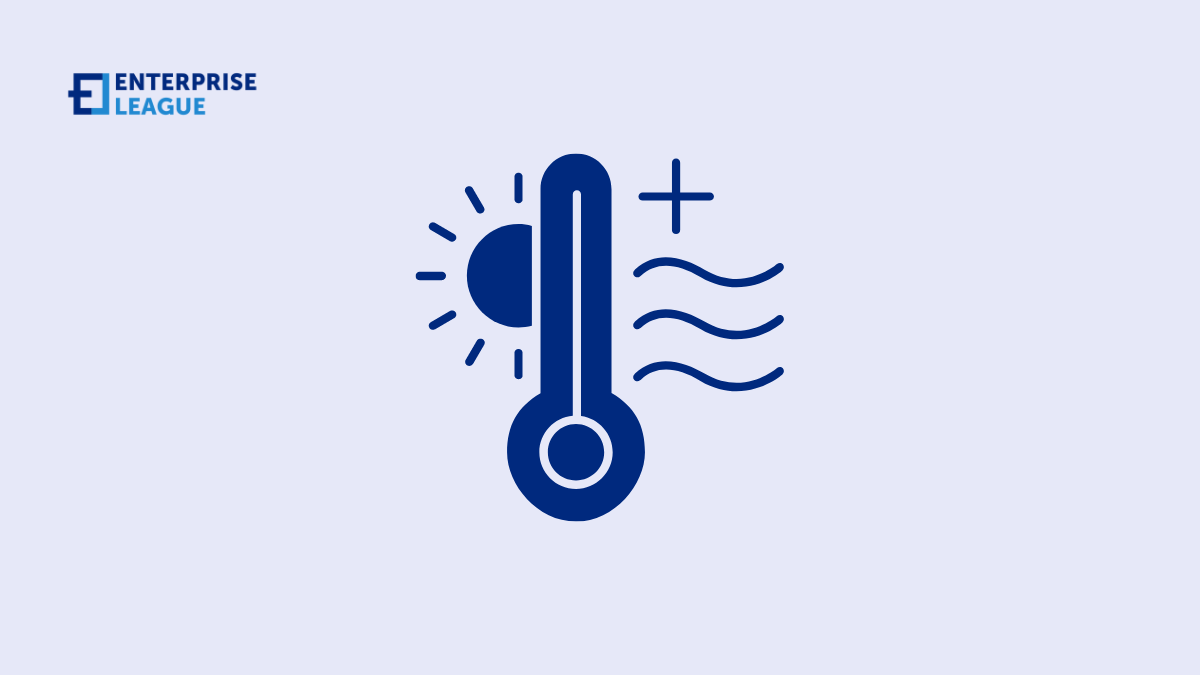Hot weather warning: What we can learn from NC’s recent heat wave
September 10, 2024

Summer can be an enjoyable season. It has long, drawn-out warm days, frosty drinks, pool dips, beach trips, and sports events. Some people absolutely love the heat and prefer the summer months. But a heat wave can make even the most diehard summer fanatics wilt in the oppressive nature of a sustained heat wave. In recent weeks, North Carolina and other parts of the East Coast in the US have been experiencing a heat wave with extreme weather warnings.
In this article, we’ll explore the valuable lessons businesses can draw from these recent weather events as we face the likelihood of more frequent heat waves and extreme weather patterns. We’ll discuss the potential impacts on workforce productivity, operational continuity, and customer behavior. We will also cover the potential health implications of extreme heat, discussing situations that may require treatment from healthcare professionals who have done online PhD programs in nursing, methods, the importance of staying cool, what trends we’re seeing in the climate, and more. So, continue reading to learn more about this topic.
Heatwave in Northern Carolina and East Coast
A heat advisory was issued in Northern Carolina on July 17th, and it took effect from 12 p.m. to 8 p.m. in several regions of the state. The highs reached the mid-90s to 100 degrees Fahrenheit, and with it came a storm risk.
Other East Coast states, including Florida, also experienced this heat wave’s sweltering temperatures, with residents flocking to the beach and hitting the pools to stay cool.
Health and public infrastructure implications of heat waves
Heat waves can be deadly and the reason for this is that the body is not capable of regulating internal temperature and eliminating heat gain during heat waves. The strain the body experiences as it tries to cool itself ineffectively also places stress on your heart and kidneys. Due to this, heat extremes such as those experienced during a heat wave can worsen health risks from certain chronic conditions such as respiratory illnesses, mental health issues, diabetes, and more. It can even cause acute kidney injury.
Heat can also disrupt and compromise essential health services like hospitals and doctor’s surgeries, as well as essential infrastructure such as the loss of power supply and public transport. Heat waves also reduce workforce productivity and increase the risk of accidents in the workplace and on the road. It is difficult to complete work or education in extreme weather, and heat waves may lead to the closure of schools and other educational institutions.
For this reason, especially the health reasons listed above, it is important to stay cool during a heat wave. The next section of this article will share how you can do this.
Staying cool in a heat wave
Recognizing and responding to heat exhaustion
- Provide immediate assistance if an employee feels dizzy, weak, or develops intense thirst or a headache.
- Call emergency services or arrange transport to a medical facility if needed.
- Move affected employees to a cool area immediately.
- If working outdoors, ensure shaded rest areas are readily available.
- Provide ample water and encourage regular hydration breaks.
- Establish a climate-controlled area for storing temperature-sensitive medications, keeping them below 77 degrees Fahrenheit.
Implement these steps to maintain workplace safety and productivity during heat waves. Remember, prevention and swift action are crucial to avoiding heat-related illnesses, ensuring employee well-being, and minimizing disruptions to your business operations during extreme temperatures.
Climate trends and weather
We’re seeing increased heat waves and extreme hot weather events such as storms, floods, and more. This is due to climate change, which has been proven to be a very real and concerning phenomenon. As such, we’re likely to see more heat waves, hotter temperatures worldwide, and an increase in adverse heat events. While governments and individuals are making progress toward lowering emissions, this upward trend in temperature may continue for some time until we can slow down the pace of global warming. Conversely, winters are wilder, too, with more storms, rainfall, and snow as the climate changes around the planet.
Conclusion
As we face a future where such events may become more common, the lessons learned from North Carolina’s heat wave can guide us in building more resilient communities and developing strategies to avoid the unpleasant effects of extreme hot weather.
More must-read stories from Enterprise League:
- Innovative customer appreciation ideas for small businesses.
- Foretelling: transform your business by predicting future trends.
- Get inspired from this list of creative small business ideas.
- Find out how to turn your hobby into a business.
- B2B payment solutions that can help you transform your business.
Related Articles
Where Can I Buy Industrial Cleaning Chemicals Online
Cleanliness is essential in any organization. However, some facilities require more than spotless surfaces for workplace safety, compliance and liability mitigation. Industrial cleaning chemicals are necessary for sanitation and disinfection. These specialized...
Pros and Cons of Working Remotely as an Essay Writer
The pandemic totally flipped everything upside down, right? Suddenly, like, millions of people had to figure out this whole work-from-home thing. But essay writers? They've kinda been doing this forever. Coffee shops, couches, random hotel rooms - they were the...
Who Are the Top-Rated Garage Door Professionals in Charleston – 8 Options for Homeowners
Garage doors are essential for businesses with vehicles or inventory, helping prevent theft and improve insulation. Plus, their appearance can contribute to the business's image and reputation. That said, it's important to find the right professionals who can supply...
Where Can I Buy Industrial Cleaning Chemicals Online
Cleanliness is essential in any organization. However, some facilities require more than spotless surfaces for workplace safety, compliance and liability mitigation. Industrial cleaning chemicals are necessary for sanitation and disinfection. These specialized...
Pros and Cons of Working Remotely as an Essay Writer
The pandemic totally flipped everything upside down, right? Suddenly, like, millions of people had to figure out this whole work-from-home thing. But essay writers? They've kinda been doing this forever. Coffee shops, couches, random hotel rooms - they were the...





